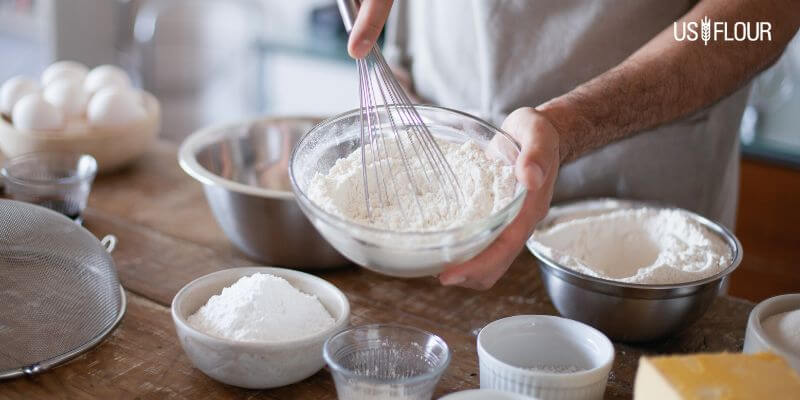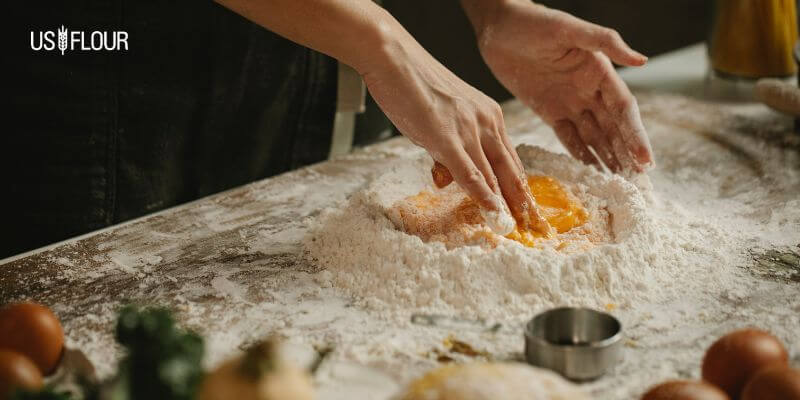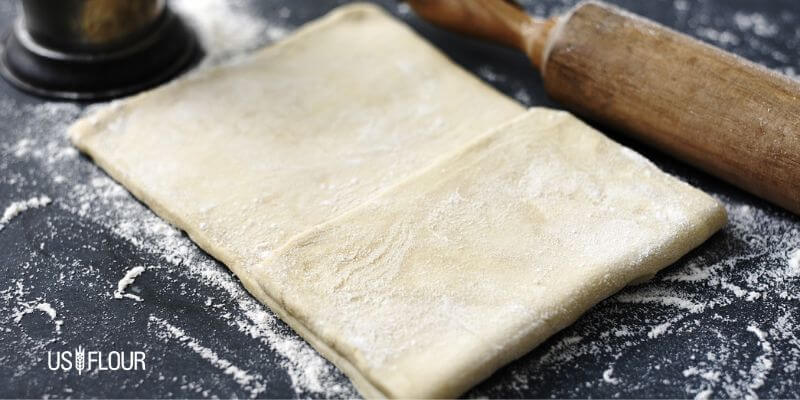From Croissants to Pie Crusts: Pastry Flour and Its Versatility

Pastry flour is a popular baking recipe worldwide for its versatility and ease of use. It is soft and has a low gluten content of 8 to 10%. As a result, it is suitable for making different types of baked goods, including biscuits, cookies, croissants, pies, and dough.
What Is Pastry Flour?

Pastry flour is soft from mild red winter or soft white wheat. A fine texture and low gluten content characterize it. Gluten is the protein that gives baked goods a softer, finer crumb. Generally, the longer the gluten strand of any flour, the more elasticity it has.
Additionally, combining high-protein flour with yeast can produce large air bubbles, more open crumbs, and a chewier texture. Yeast is a strong leavener. However, when a weaker leavening agent like baking powder or baking soda is mixed with flour with less protein, it produces smaller bubbles and less elasticity. It often results in softer and tender products.
Pastry flour is used for making different baked goods due to its versatility. It can make croissants, pie doughs, cookies, pastries, biscuits, and doughnuts.
5 Common Uses of Pastry Flour
Pastry flour is used to make a variety of baked products. Below are some common goods pastry flour is used for and the type of final product.
1. Pie crusts
A flaky and texture baked goods can be achieved if pastry flour is used for pie crusts. Due to its lower protein content when compared to all-purpose flour, pastry flour results in a more delicate crust because it prevents gluten formation.
When baking flour is used in pie crust, it is important not to overwork the dough but handle it gently. Additionally, pastry flour absorbs more liquid than all-purpose flour. Therefore, you may need to make some adjustments to the recipe. With a little practice, using pastry flour for pie crusts can always result in perfectly flaky and delicious pies.
2. Croissants
It is essential to use pastry flour to achieve the desired flaky and light texture. Its low protein content allows the dough to expand without becoming tough. The result is a perfectly layered croissant.
When making croissants with pastry flour, handling the dough gently and allowing plenty of time for resting and rising is important. Using pastry flour for croissants can result in bakery-quality pastries when you are patient and pay attention to the little things.
3. Puff pastry

Pastry flour is a key ingredient in making puff pastry. It is essential to achieving light and airy layers, commonly known as delicate pastry. Gluten formation is prevented in pastry flour because of its low protein content. This makes it suitable for puff pastry that does not require tough dough.
Pastry flour is best suited for puff pastry because it absorbs liquid more slowly than all-purpose flour. It is important to follow the recipe closely when using it to make puff pastry. It is also required that plenty of time is given to allow the dough to rest and rise.
4. Cakes
The use of pastry flour helps to get a product with a tender and delicate texture. The cake baked using pastry flour usually has a crumblier texture. This is also due to the flour’s lower protein content.
Just as with pie crust, adjustments must be made to the recipe. This is because pastry flour absorbs more liquid, so you must make room for additional moisture. Using pastry flour requires some experimentation and practice as well. When perfected, the cakes are usually crumbly and tender.
5. Cookies
Cookies are another best application of pastry flour. Different cookies, like shortbread or sugar cookies, are often tender and delicate. Like all other baked goods, pastry flour is used to adjust the amount of liquid used because it requires additional moisture.
Also, paying attention to detail and following the recipe will help make cookies and many crumbly treats. Also, do a small quantity of experimentation to get the perfect way of making cookies using pastry.
Important Things to Know About Pastry Flour
Before using pastry flour to make croissants or any other type of baked goods it is suitable for, ensure that you note the following things:
- Pastry flour contains no additives: Whole wheat pastry flour is produced from soft white or red wheat. It is free of GMOs and addictive because it is organic and unbleached. Pastry flour’s characteristics include its natural off-white color, delicate texture, and fresh aroma and flavor.
- Pastry flour does not work for weight loss: You must refrain from consuming baked goods made with pastry flour to lose weight. This is because several pastry flour snacks are filled with sugars, refined flour, and artificial fats. These are all dangerous to your body and can lead to various diseases.
- Pastry flour helps digestion: Consuming pastry flour greatly benefits your digestive system. This is because it consists of all parts of the kernel, including the endosperm, bran, and germ. This, as a result, makes it rich in fiber. This fiber eases constipation and softens stool as it passes through your digestive system.
Conclusion
Pastry flour is versatile. It is rich in minerals and nutrients because it contains bran, germ, and endosperm. Some common baked goods it is used to make include cakes, croissants, muffins, cookies, pastries, and pies. Nevertheless, it is recommended that you consume these products only for a short time to avoid issues.
 Power to The Bakers.
Power to The Bakers.